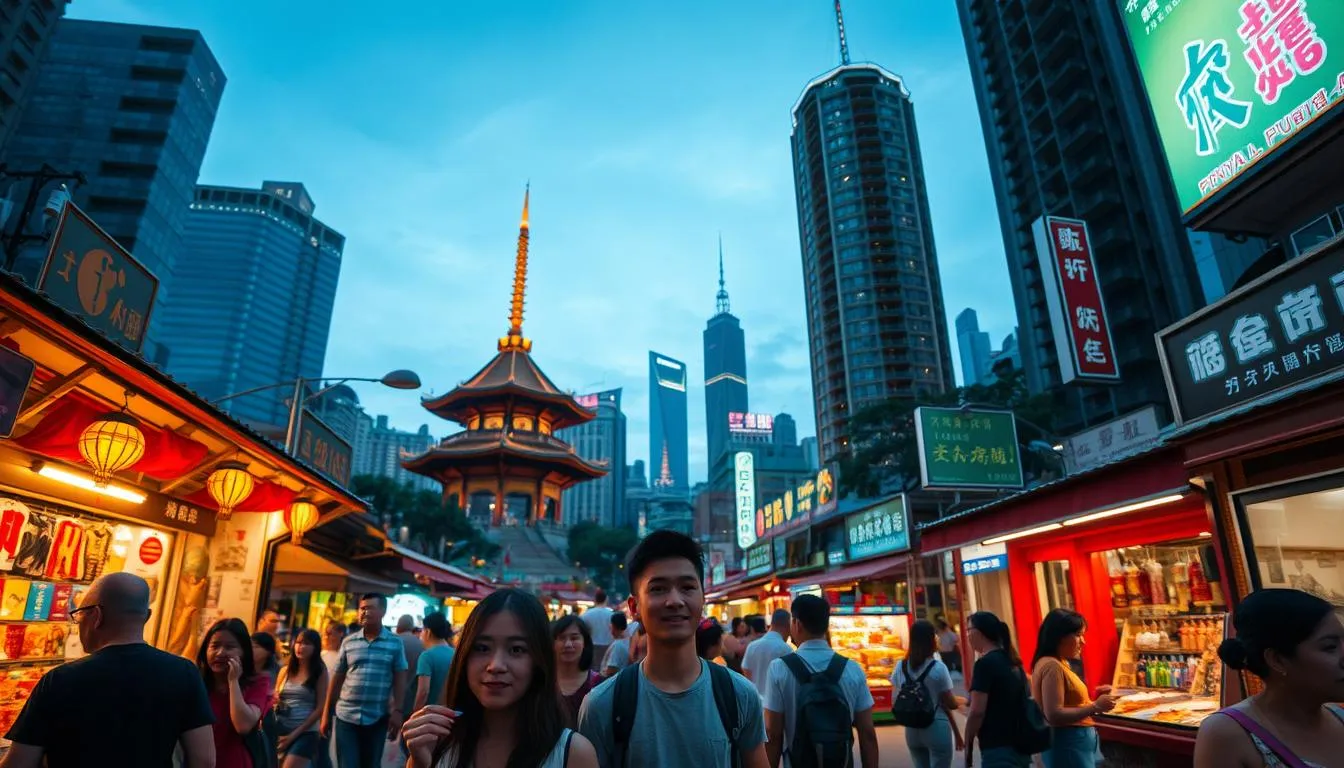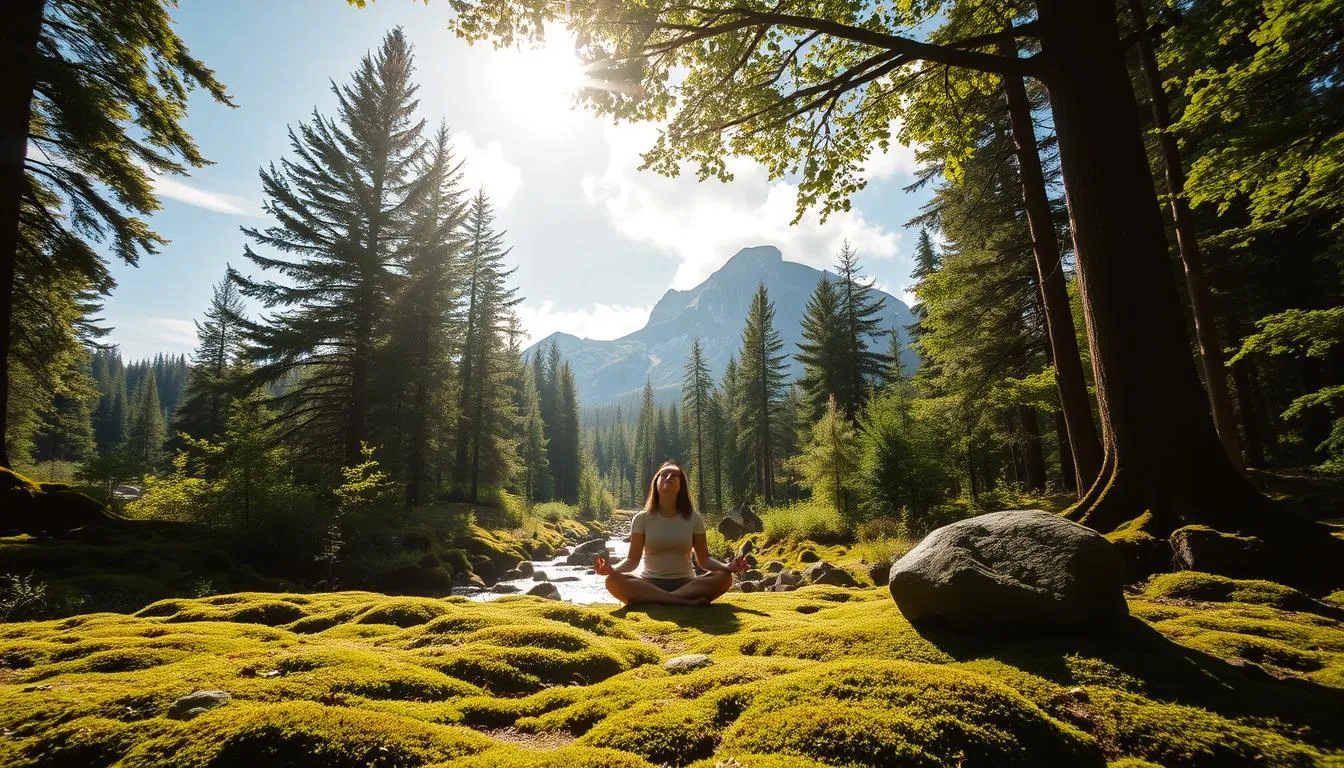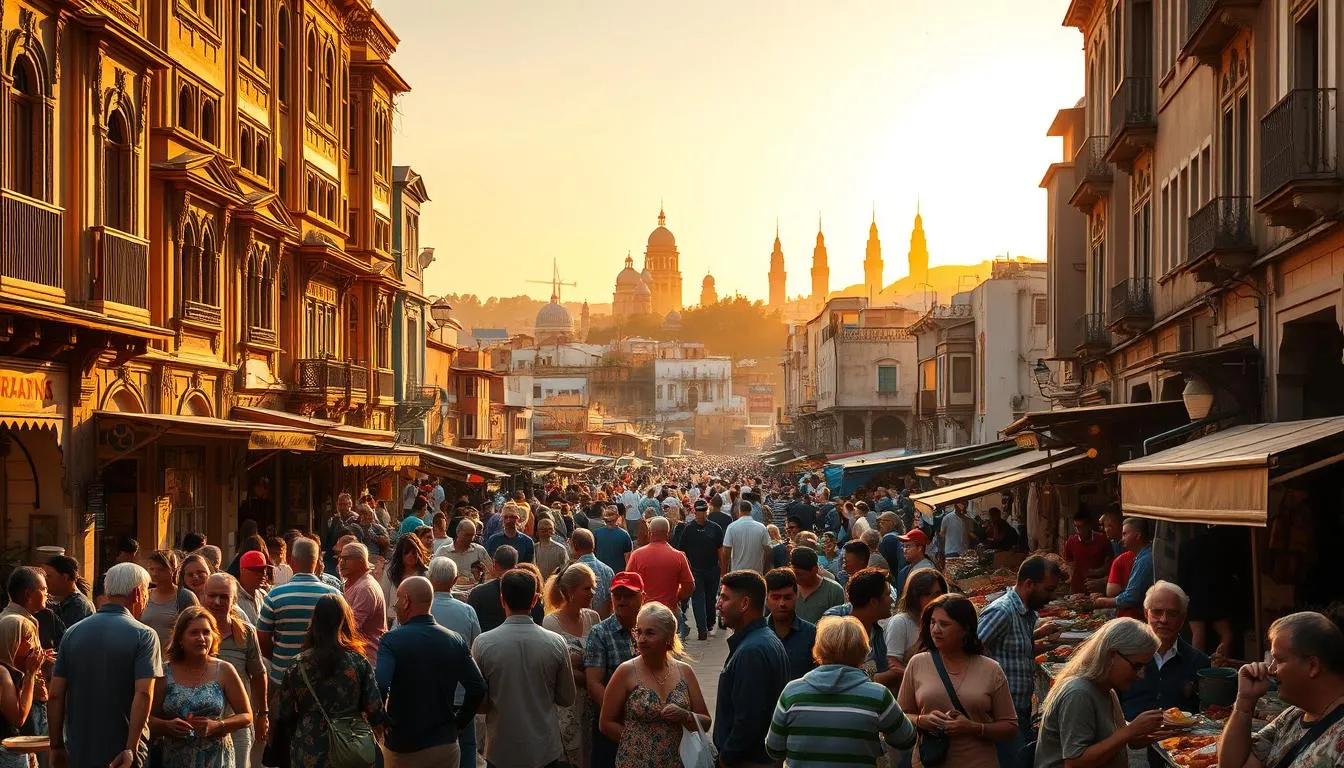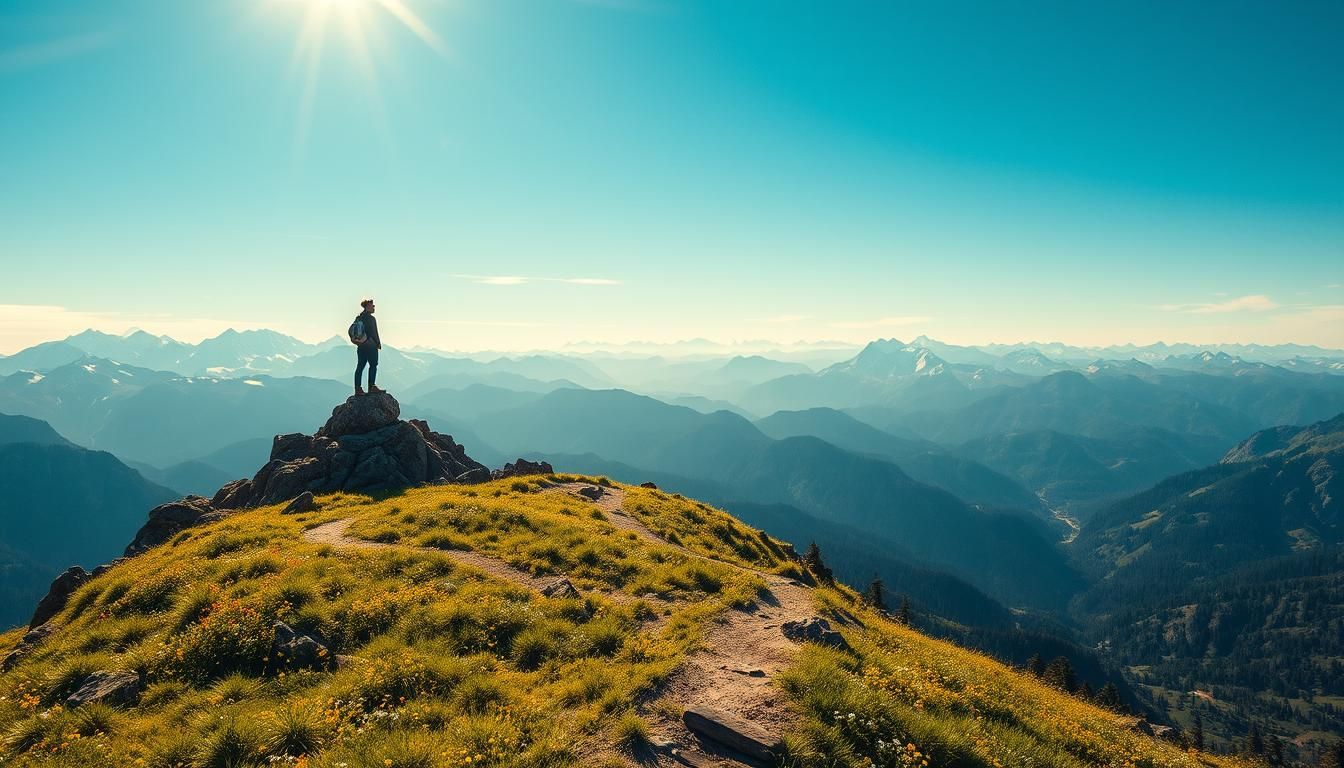Did you know that nearly half of modern travelers now choose trips that focus on meaningful interaction rather than just sightseeing?
This shift defines experiential travel as a move from passive touring to hands-on encounters that build a genuine connection with people and place.
These journeys blend food, culture, nature, and adventure so you can pick the way into a destination that fits your interests.
Choosing local hosts, independent eateries, and neighborhood guides leads to more authentic moments and fairer distribution of tourism income.
Practical note: many immersive options need fitness or specific skills, so check policy exclusions and meeting requirements before you book.
Throughout this article we’ll define the movement, show pillars and examples, and offer simple planning tips to help readers from the United States start a fuller journey and bring home lasting memories.
Key Takeaways
- Experiential travel focuses on active, meaningful participation over checklist sightseeing.
- Selecting local hosts and businesses boosts authenticity and supports communities.
- Immersive experiences span food, culture, nature, and adventure.
- Check activity requirements and policy exclusions before booking.
- This trend helps travelers create deeper memories and stronger human connection.
What experiential travel really means today
People increasingly seek moments that teach them about a place, not just show it.
From sightseeing to immersive experiences and deeper connections
Gone are the days when a trip only meant checkpoints and photos. Modern journeys invite you to learn, cook, and talk with locals. These immersive experiences focus on everyday life, not only headline attractions.

How it differs from traditional holidays
Traditional holidays often prioritize rest, resort pools, and top sights. In contrast, experiential approaches center on context, stories, and human encounters.
“A deeper way to see a destination is to slow down, ask questions, and join the rhythm of a place.”
| Approach | Main Focus | Typical Outcome |
|---|---|---|
| Fly-and-flop holidays | Comfort and leisure | Relaxation, limited local insight |
| Immersive experiences | Participation and learning | New skills, local connections |
| Hybrid options | Comfort plus community access | Balanced rest and meaningful moments |
Think about the way you travel, not just where. Small-group tours, market walks, or cooking with a family bring real immersion and memorable stories. With a little preparation—basic phrases and customs—you’ll get more from any trip.
The rise of the trend and why it matters now
Spending on guided activities and hands-on programs has jumped, reshaping how people plan their time away.
Market momentum
The global market for experiences reached roughly $1.1–$1.3 trillion in 2024. Structured activities like guided tours and live events represent about 25% of that spend.
This shift shows clear growth in how tourism is priced and packaged.
| Metric | 2024 Figure | Impact |
|---|---|---|
| Experience market size | $1.1–$1.3T | More product investment and jobs |
| Share for structured activities | ~25% | Higher demand for curated programs |
| Traveler influence | 98% cite unique activities | Destinations adapt offerings |
Generational shift
Millennials and Gen Z drive this change. Bloomberg found 86% of millennials prefer journeys that foster connection, and 60% value local culture.
Why new experiences create stronger memories
Research links novel, participatory moments to greater happiness and long-term satisfaction.
Choose one or two standout activities per trip to boost learning and joy without overloading your plan.
Pillars of immersive experiences: food, nature, adventure, and wellness
Plan around four core pillars to craft trips that teach, restore, and excite. Choose one anchor theme or mix pillars for a balanced itinerary. Pairing a morning hike with an afternoon cooking class deepens how you sense a region and its seasons.

Culinary immersion: farm-to-table, cooking lessons, markets, and tastings
Focus on market walks, farm visits, and hands-on cooking classes. Try pasta-making in Umbria with Chef Lorenzo, an Asheville walking food tour that highlights local producers, or oyster cultivation and tasting in Ston, Croatia.
Nature-first journeys: wild landscapes, trails, and life on the land
Spend time on heritage trails, forests, and lakes led by local stewards. UK wild camping shows you can find awe close to home, supported by rising gear sales and active guides.
Active adventures: hiking, cycling, rafting, polar skills, and more
Options range from easy hikes to skill-building programs like the Shackleton Challenges. Norway’s Polar Skills Challenge, which includes pulk-hauling while ski touring, suits travelers after grit and learning.
Healthy escapes: thermal spas, yoga, meditation, and mindful retreats
Use thermal spas and yoga retreats as restorative counterpoints. Small group sizes and specialist guides protect safety and boost learning during technical or remote activities.
Plan ahead: book popular workshops early, pack for outdoor sessions, and leave downtime to reflect. Filter choices by values—support local producers, protect landscapes, and take home skills not just souvenirs.
Where people are going for authentic connection
More people now choose lesser-known corners of the world to build real connections with locals. These choices favor small towns, coastal enclaves, and neighborhood stays over crowded centers. That shift gives you time to listen, learn, and join everyday rhythms.

Beyond the usual hotspots
Look past headline cities. Neighborhoods, rural towns, and coastal enclaves often offer easier conversation and living traditions. Community-based stays and locally owned lodges give direct access to hosts who can open doors to workshops, tastings, and seasonal events.
Long-haul and close-to-home
Some families are pivoting to Japan for ski trips. Operators report adding temple tours and samurai demonstrations to powder days. These combos make the trip richer and more cultural without extra stress.
Closer to home, the UK’s wild camping boom shows immersive options need not be far away. Influencers like Claire Wildbeare and Paul Messner have grown followings, and gear sellers such as Ellis Brigham note higher tent sales. A weekend in a state forest can feel like a full cultural exchange.
“Authenticity often looks like everyday life: morning markets, community nights, or helping with a harvest.”
- Plan shoulder-season visits so hosts have time to engage.
- Work with local fixers or guides who translate your interests into meaningful visits.
- Build buffer nights into your itinerary to handle varied logistics by region.
Be respectful and curious. Small acts of courtesy help you be welcomed back to a destination and make a positive impact on independent businesses in the region.
Experiential travel examples that elevate any trip
Local-led programs and intimate encounters give you deeper access to a place’s rhythms.
Guided tours with a twist
Choose small, guided tours—like neighborhood food walks led by an expert who explains local producers and culinary history.
Hands-on cooking and heritage
Join a pasta-making session in Umbria with Chef Lorenzo or a New York City market demo that shows how fresh food reaches local communities.
Indigenous encounters and cultural rituals
Seek Indigenous-led outings: visit a Sami reindeer camp or take a Cree forest walk to learn plant medicine.
Respectful participation in a Ganges Aarti chanting sunset ceremony deepens cultural understanding.
Music, masters, and community nights
Go behind the scenes at Budapest’s Liszt Academy for a student tour and intimate recital. Spend an evening at a Cape Breton Ceilidh for live Gaelic music and dance.
Meet extraordinary individuals—hear Iditarod champion Martin Buser in Denali or listen to an Everest achiever in Kathmandu for lessons on resilience.
“Mix one cultural access, one hands-on workshop, and one community gathering to elevate any plan.”
Tip: Book early, favor small groups, and read pre-arrival notes so each experience feels personal and respectful.
Experiential travel benefits for people and places
Small decisions—where you sleep, eat, and learn—can reshape how benefits reach a community.
Spreading tourism dollars means choosing locally owned stays, family-run restaurants, and specialist activities. Community-based channels send revenue straight to independent operators. That helps guesthouses, cooks, and guides stay in business and keep traditions alive.
Deeper understanding through conversation
Conversations with guides and hosts reveal the reasons behind rituals, land use, and social priorities. These chats offer context that facts alone cannot give. They make the travel experience meaningful and memorable.
Loyalty and reputation that lasts
Memorable moments build connection. Travelers who feel welcomed tell friends and return. That word-of-mouth boosts a place’s reputation and brings steady visitors who value quality, ethics, and local knowledge.
- Skills and confidence: foraging basics, cooking techniques, and local craft skills stay with you after a trip.
- Fair practices: small-group sizes, fair pay, and clear sourcing send value to communities.
- Practical asks: ask providers how fees support local projects or training.
- Safety check: confirm fitness requirements and insurance exclusions before booking activity-based plans.
- Simple habits: learn names, tip fairly, and follow hosts’ lead to build goodwill.
“When people feel seen, places receive investment that matches their needs.”
| Benefit | Who gains | How it helps |
|---|---|---|
| Direct spending | Local businesses | Jobs, income, preserved services |
| Knowledge transfer | Visitors and hosts | Skills, mutual respect, lasting memories |
| Reputation boost | Destinations and providers | Repeat visits, better bookings, ethical demand |
| Community resilience | Neighborhoods | Funding for projects, training, and conservation |
Bottom line: these benefits ripple both ways. People feel supported and seen, and places gain investment that aligns with local values and long-term needs.
Planning responsibly: safety, sustainability, and respect
Plan the practical details first so your next trip is safe, fair, and memorable. A few checks before you book cut risks and help hosts benefit from your visit.
Check insurance exclusions and fitness levels for activities
Start with safety: read policy exclusions for adventure and outdoor activities. Confirm the fitness level required so you arrive prepared and insured.
Vet operators’ certifications, group size, and emergency plans. Remote or technical challenges may need specialist guides and extra gear.
Travel that makes a positive impact: alignment with UN Tourism goals
Choose providers who show fair pay, low-waste practices, and clear community investment. Aligning with UN-style goals helps ensure your participation supports lasting local benefits.
- Ask how fees support training, preservation, or community projects.
- Prefer operators who measure outcomes and publish stewardship plans.
- Reduce footprint: consolidate transfers, favor rail where possible, and bring refillable bottles.
Honor customs and history: ethical engagement and informed behavior
Learn basic greetings, dress codes, and photography etiquette before arriving. Ask permission before joining rituals or entering sacred places—this shows genuine respect.
“Responsibility is part of the experience: it makes encounters safer, richer, and more welcome around the world.”
How to start your experiential journey from the United States
Start small and local: try a market demo or a neighborhood food walk to test how hands-on days feel.
Choose destinations known for cultural immersion and strong local hosts. Look at Italy’s farm-to-table regions, Scandinavia’s Indigenous programs, or community nights in Atlantic Canada. These places offer easy access to meaningful activities and a supportive local network.
Book guided tours and community-based experiences
Pre-book one or two small-group guided tours that promise insider access. Pick hands-on workshops, producer visits, or neighborhood walks led by local storytellers.
Design an itinerary for memories
Balance your trip with one anchor activity, one spontaneous stop, and open time to rest. Add buffer days so you can reflect and avoid burnout.
“Book fewer moves between hotels, choose walkable neighborhoods, and allow quiet time — that’s where memories form.”
- Begin local: NYC market demos, Asheville food walks, or tribal-led forest outings.
- Fewer hotel changes and a transit pass make community access easier.
- Travel in shoulder seasons for smaller groups and better host availability.
- Pack smart: closed-toe shoes, modest clothing, a notebook, and curiosity.
| Step | Why it helps | Example | When to act |
|---|---|---|---|
| Start local | Build skills and confidence | NYC market demo | Next month |
| Pre-book small groups | Guarantee insider access | Asheville walking food tour | 2–3 months ahead |
| Balance days | Deeper learning, less fatigue | One workshop + buffer day | During planning |
| Choose trusted operators | Safety and clear cultural guidance | Indigenous-led forest walk | When booking |
Take the opportunity to book a single high-quality experience on your next trip. One well-chosen tour can change how you see a place and start richer journeys ahead.
Conclusion
Today’s journeys reward curiosity over checkpoints, inviting you to learn through doing. One well-chosen experiential activity can turn ordinary moments into lasting memories. These experiences boost personal growth and create stronger ties with hosts and places.
Pick workshops, small-group tours, or immersive experiences in destinations where cultural immersion feels natural. Plan responsibly—check fitness levels, insurance, and local customs—so your participation helps communities and supports good tourism practices.
Balance comfort and challenge. Let local guides lead you to history, foodways, and adventures that match your level. Treat respect as essential: ask permission, pay fairly, and leave a positive footprint.
Try one hands-on offer on your next trip and watch a single experience reshape how you travel for life.
FAQ
What does experiential travel mean today?
It means choosing activities that create real connections with a place—hands-on cooking classes, guided neighborhood walks, time with local hosts, or nature-led adventures. The focus is on participation and learning rather than just seeing sights.
How is this different from traditional tourism or “fly-and-flop” holidays?
Traditional tourism often centers on passive sightseeing and convenience. This approach favors active engagement, cultural exchange, and longer interactions that lead to stronger memories and personal growth.
Who is driving the rise of these kinds of experiences?
Younger generations, especially Millennials and Gen Z, prioritize meaningful cultural encounters and unique activities. Market data also shows growing consumer spend on structured experiences, making them a major part of the tourism economy.
Which types of experiences form the core of immersive trips?
Four pillars dominate: food (farm-to-table meals and market tours), nature (trails and wilderness stays), active adventure (hiking, cycling, rafting), and wellness (spas, yoga, meditation). Each offers different ways to connect with a destination.
Can I find authentic community-based stays outside major tourist hubs?
Yes. Many travelers now seek less-touristy destinations and community-run lodgings that return tourism dollars locally and offer more genuine cultural exchange than mainstream resorts.
What are safe ways to join indigenous or cultural encounters?
Choose vetted operators who work respectfully with local communities, follow guidelines set by hosts, avoid exploitative practices, and prioritize learning over spectacle. Book through reputable agencies or local community groups when possible.
How do guided tours offer more than standard sightseeing?
Small-group, expert-led tours—like neighborhood food walks or artisan studio visits—give insider context, access to off-the-beaten-path spots, and authentic interactions with makers and guides.
How should I balance activities and downtime in an itinerary?
Aim for variety and pacing: pair active days with calmer cultural or wellness experiences. Allow time for reflection and spontaneous local discoveries so memories deepen instead of feeling rushed.
What benefits do these experiences bring to host communities?
When done responsibly, they spread tourism dollars to local businesses, support cultural preservation, and create ongoing relationships that benefit guides, artisans, and small enterprises.
How can travelers ensure their trip supports sustainability and ethical engagement?
Research operator practices, favor locally owned services, follow UN Tourism guidelines where applicable, respect customs, and avoid activities that harm people, wildlife, or heritage sites.
What practical safety steps should I take before booking adventurous activities?
Check insurance for activity exclusions, confirm fitness requirements, review cancellation and emergency plans, and book with providers who use certified guides and clear safety procedures.
Where can someone in the United States start when planning this kind of journey?
Begin by choosing regions known for cultural immersion—regions with strong culinary scenes, outdoor access, or community-hosted experiences. Book small-group guided tours or community stays for insider access and plan an itinerary that mixes active days, cultural learning, and relaxation.
